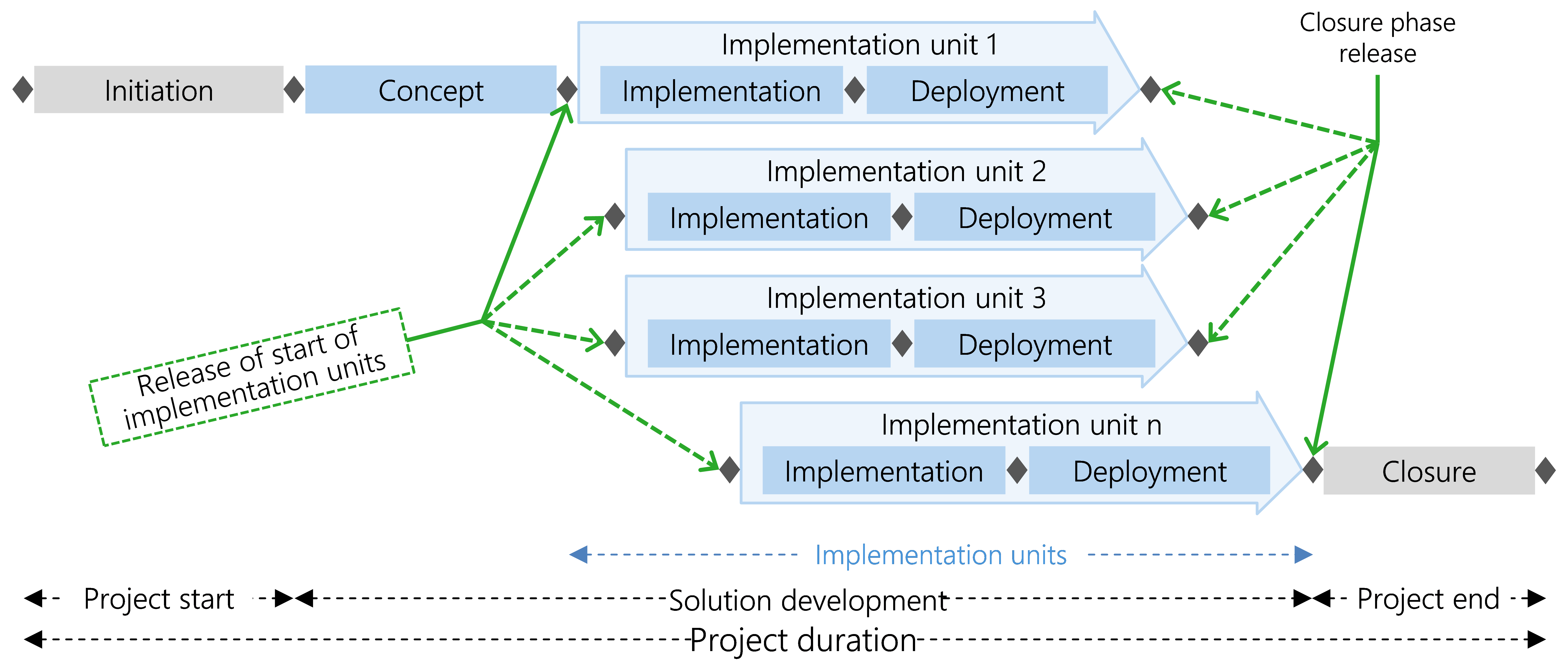Implementation units under traditional approach
If the traditional solution development of an IT project becomes so complex that the implementation of the whole scope seems questionable, or if initial outcomes for use are to be delivered as quickly as possible, the implementation and deployment phases can be broken down into several implementation units.
The traditional approach of HERMES project management enables both sequential and overlapping in time or parallel development in implementation units. The release of the first implementation unit is the implementation phase release, which requires regular closure of the concept phase. Each implementation unit covers the two phases of implementation and deployment.
An implementation unit comprises all technical and organizational outcomes of the project that are required for deployment of the system or a part of it. At the end of an implementation unit, the product or system is used productively.
Figure 36 schematically shows the overlap in time between implementation units as independent control units, each with an implementation and deployment phase.

The following points need to be observed with respect to implementation units:
-
The initiation and concept phases are completed. Implementation units can be started after the concept phase. After that point, the project takes place in the phases and milestones of the respective implementation unit. There is no superordinate phase model.
-
Although the number of implementation units is not limited by HERMES, the duration of the project should not be unlimited. For this reason, the implementation units are planned as a whole in the concept phase.
-
Each implementation unit covers the implementation and deployment phases. Each implementation unit goes through the decision-making tasks of steering and management.
-
The start of an implementation unit must be released by project steering. This requires an updated project management plan.
-
From a controlling perspective, implementation units are planned and controlled separately in terms of costs, deadlines, and outcomes. They form independent control units. Accordingly, reporting should be geared to the implementation units.
-
It makes sense for a final evaluation of the implementation unit to be carried out at the end of every implementation unit and the lessons learnt to be documented and used.
Provided that each implementation unit could be finished with a formal phase closure, at the end of the last implementation unit a decision is made on effective release of the next closure phase. In the closure phase, the corresponding tasks and outcomes are carried out. This includes the final project evaluation of all implementation units.
